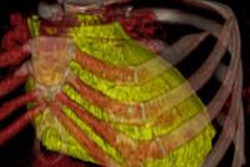Patients with higher internal organ and thigh muscle fat spend more nights in the hospital when they are admitted, according to imaging data from UK Biobank presented by Swedish researchers at the European Congress on Obesity, taking place in Porto, Portugal from 17 to 20 May.
A team led by Dr. Olof Dahlqvist Leinhard of Advanced MR Analytics AB in Linköping, Sweden, found that middle-aged people who spend the most nights in hospital have on average much higher levels of visceral and thigh muscle fat than those who spend no nights in hospital.
The study included 2,864 men and 3,157 women. Patients' visceral and thigh muscle fat was measured using MRI, which is the current gold standard for body composition profiling. Leinhard and colleagues sought to determine the link between body composition and prior healthcare burden (using the number of nights of hospitalization to measure healthcare burden).
The group found that increased healthcare burden was associated with higher levels of visceral and thigh fat: Those patients with the highest of these measures were hospitalized for at least nine nights.
"The findings indicate that visceral obesity should be the focus rather than subcutaneous fat and body mass index for achieving better health," Leinhard said in a statement released by the European Association for the Study of Obesity.



















